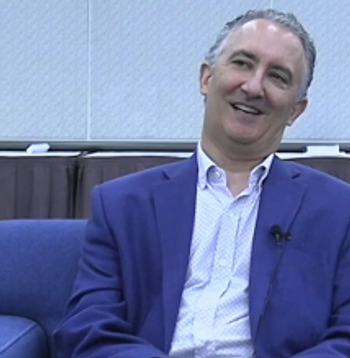
Social Misuse of Disorder Designation, Part II: The Dysfunction Defense
A dysfunction-based defense against misuse of disorder designation has serious conceptual deficiencies, is vulnerable to social biases, and offers very little protection in practice.
Dr Aftab is a geriatric psychiatry fellow at University of California San Diego (UCSD) in La Jolla, CA, and a former psychiatry resident at Case Western Reserve University/University Hospitals Cleveland Medical Center in Cleveland. He is also a member of the Psychiatric Times Advisory Board. He can be reached at awaisaftab@gmail.com.
This is Part 2 of a three-part series on a pertinent philosophical question in the era of diagnostic inflation: What conceptual means are available to prevent deviant and undesirable behavioral conditions from being diagnosed as mental disorders as a result of social bias and stigma? This series is based on an essay (“Social Misuse of Disorder Designation: Exploring Dysfunction and Harm-Based Conceptual Defenses”) that was awarded the 2018 Karl Jaspers Award by the Association for the Advancement of Philosophy and Psychiatry. Dr Aftab has been actively involved in initiatives to educate psychiatrists and trainees on the intersection of philosophy and psychiatry, and this series constitutes one effort to bring this discussion to a wider audience.
At the end of
Lack of official definition
Given the important role dysfunction plays here, one would imagine that the DSM (and psychiatry, more broadly) would have a valid, unambiguous definition of dysfunction that would clearly determine which deviancies and conflicts are disorders and which are not, even in situations of controversy. Sadly, that is not the case. DSM never formally defines this crucial term. It is not surprising, then, that the authors of the DSM 5 white paper on nomenclature felt that the mental disorder definition “is not cast in a way that allows it to be used as a criterion for deciding what is and is not a mental disorder, and it has never been used for that purpose.”1
This lack of official definition is compounded by the fact that the presence of dysfunction can only be inferred or hypothesized in vast majority of the cases due to the current state of neuroscientific knowledge. Again, the authors of the DSM 5 white paper on nomenclature noted: “The problem is that too little is known about the cerebral mechanisms underlying basic psychological functions, such as perception, abstract reasoning, and memory, for it to be possible in most cases to do more than infer the probable presence of a biological dysfunction” [emphasis added].1
Biological causation is not equivalent to dysfunction
A distinction needs to be made between dysfunction and etiology/biological causation. Often in practice, etiology becomes dysfunction when the condition has already been designed as a disorder on the behavioral level. However, mere determination of causal pathway is not enough, as even normal phenomena have causal pathways. For instance, in our example red hair being labeled as a disorder, we know red hair is produced by recessive genes and from a specific ratio of pheomelanin and eumelanin, but etiology by itself does not tell us that red hair results from a dysfunction. What is needed is a discriminative account of what sort of causal mechanisms or what sorts of etiologies constitute dysfunction.
Often in discussions of this kind a hope is expressed that some biological ‘abnormality,’ such as an endocrine or genetic disturbance, will be discovered and will resolve the issue once and for all. It is hard to see how this would answer the question any more than would knowledge of the biological cause or antecedents of left-handedness (surely there must be one) indicate whether that condition should be regarded as a normal variant or pathology.
Derek Bolton, PhD, explains this reasoning in the context of functional neuroimaging3:
By all means it is the case that if we are assuming that a specific psychological condition is a disorder then we may say in a derivative sense that the brain activity involved in producing it is disordered, but the inferential logic runs this way round, not the other: we do not see from the functional neuroimages that the brain activity (or the areas involved in the brain activity) are disordered, and then infer that the associated psychological functioning is a disorder.
Objectivist definitions of dysfunction do not solve the problem
Dysfunction can be defined at the level of the phenomenon or in terms of underlying causal mechanisms. When dysfunction is defined at the level of the phenomenon, a typical strategy is to show a disadvantageous deviation from the norm, ie, the phenomenon is statistically atypical in a harmful way. Dysfunction at the level of the phenomenon requires a quantitative or qualitative comparison with a reference class. This line of reasoning has been developed in its most elaborate form by Christopher Boorse, PhD, in his
One of the major problems with this approach lies in defining an appropriate reference class, and usually the question of dysfunction depends on the selection of appropriate reference class. Boorse stated that there are three reference classes based on age, sex, and race. However, this leaves out sexual orientation, potentially making homosexuality statistically atypical. The question then becomes whether sexual orientation should be a reference class or not. Boorse maintained that it should not be and, following his reasoning, had to admit that homosexuality was a disorder (and worked his way around it by saying that it was a disorder but not an “illness”).
In words of
Since the judgement that homosexuality is a disease precedes the judgement that the BST is a correct account of health, it is circular to insist, as Boorse does, that the BST can tell us whether homosexuality is a disease. The BST does not give a real answer, let alone a non-evaluative answer, to such a question. Instead it presupposes the answer it gives.
It is obvious that there is no objective way of determining the appropriate reference class. Should the reference class of posttraumatic symptoms be all individuals of same age, sex, and race, or all individuals of same age, sex, and race who have been exposed to trauma? If the former is true, symptoms of acute stress are statistically atypical, but they are statistically typical if the latter is true.
Defining in terms of underlying causal mechanisms requires a notion of design from which the causal mechanisms deviate. The most precise definition of this approach comes from Wakefield’s
The biggest problem is that the biological mechanisms underlying much of psychological functioning are known with only limited detail, and the presence of dysfunction cannot be established definitively. In practice, this leads to the use of surface phenomena as dysfunction indicators, the presence of which infers the existence of dysfunction.
[R]equiring a minimum duration and persistence; requiring that the frequency or intensity of a symptom exceed that seen in normal people; requiring disproportionality of symptoms, given the context; requiring pervasiveness of symptom expression across contexts; adding specific exclusions for contextual scenarios in which symptoms are best understood as normal reactions; combining symptoms to increase cumulative pathosuggestiveness; and requiring enough symptoms from an overall syndrome to meet a minimum threshold of pathosuggestiveness.
The use of dysfunction indicators utilizes comparisons with a so-called normal control group, and the use of this normative comparisons makes it highly susceptible to social biases, depending on the societal notions of normal. If a society considers heterosexuality to be the norm, then these strategies would offer little to no protection against pathologizing of homosexuality. This is similar to the problem of reference class that BST faces. Additionally, the inference of dysfunction in the presence of dysfunction indicators is just that-an inference. It is tentative, and its validity remains to be demonstrated.
There are many ways for things to go wrong in biological systems.
1. Mechanism failure
2. Abnormal environment
3. Normal but inhospitable environment
4. Heuristic failure
As
The practice of psychiatry makes little use of dysfunction
Perhaps one of the most telling practices is the use of other specified or unspecified disorders. Even when symptom presentations do not satisfy DSM thresholds of dysfunction indicators, the accepted practice is to label them as disorders and prescribe treatment for them as such. For instance, if a person presents to a psychiatrist with depressive symptoms that do not meet criteria for major depression, the presentation is usually labelled as “other specified depressive disorder” if the patient finds them distressing. DSM clearly sanctions the disorder designation when there is insufficient evidence of dysfunction, even by its own indirect inferential standards.
Consider someone who presents with overwhelming anxiety after being given the diagnosis of a terminal cancer. Does the anxiety represent a failure of an internal mechanism to perform a natural function? If we were to ask the practicing psychiatrist, we would find that they are hardly concerned with this abstract question of failure of natural design. What the psychiatrists will assess is the degree of distress and impairment. If the degree of distress and impairment is judged to warrant treatment, the psychiatrist will call it a disorder ( “other specified anxiety disorder” or something else).
All these conceptual difficulties surrounding dysfunction make it clear that dysfunction does not protect against social misuse of disorder designation. In current practice of psychiatry, disorder designation is driven by distress and impairment with little essential role played by dysfunction. The existence of dysfunction is inferred on the basis of normative judgments, which are not only unable to differentiate dysfunction from other ways of going wrong but are also heavily influenced by social views of normality. The weakness of dysfunction to protect against social misuse of disorder designation is also clear from the history of nosology. The declassifications of homosexuality, ego-syntonic cases of some paraphilias, and ego-syntonic cases of transgender identity in recent times were all justified on the basis of lack of harm and not on the basis of dysfunction.
Since a dysfunction-based defense does not adequately protect against arbitrary disorder designations, we will explore what a harm-based defense might look like in
References:
1. Rounsaville BJ, Alarcón RD, Andrews G, et al. Basic nomenclature issues for DSM-V. In: A Research Agenda for DSM-V. Arlington, VA, US: American Psychiatric Association; 2002:1-29.
2. Spitzer R.
3. Bolton D. What is Mental Disorder?: An Essay in Philosophy, Science, and Values. Oxford, United Kingdom: Oxford University Press; 2008.
4. Boorse C.
5. Kingma E.
6. Wakefield JC.
7. First MB, Wakefield JC.
8. Matthewson J, Griffiths PE.
9. Schwartz PH.
Newsletter
Receive trusted psychiatric news, expert analysis, and clinical insights — subscribe today to support your practice and your patients.

















